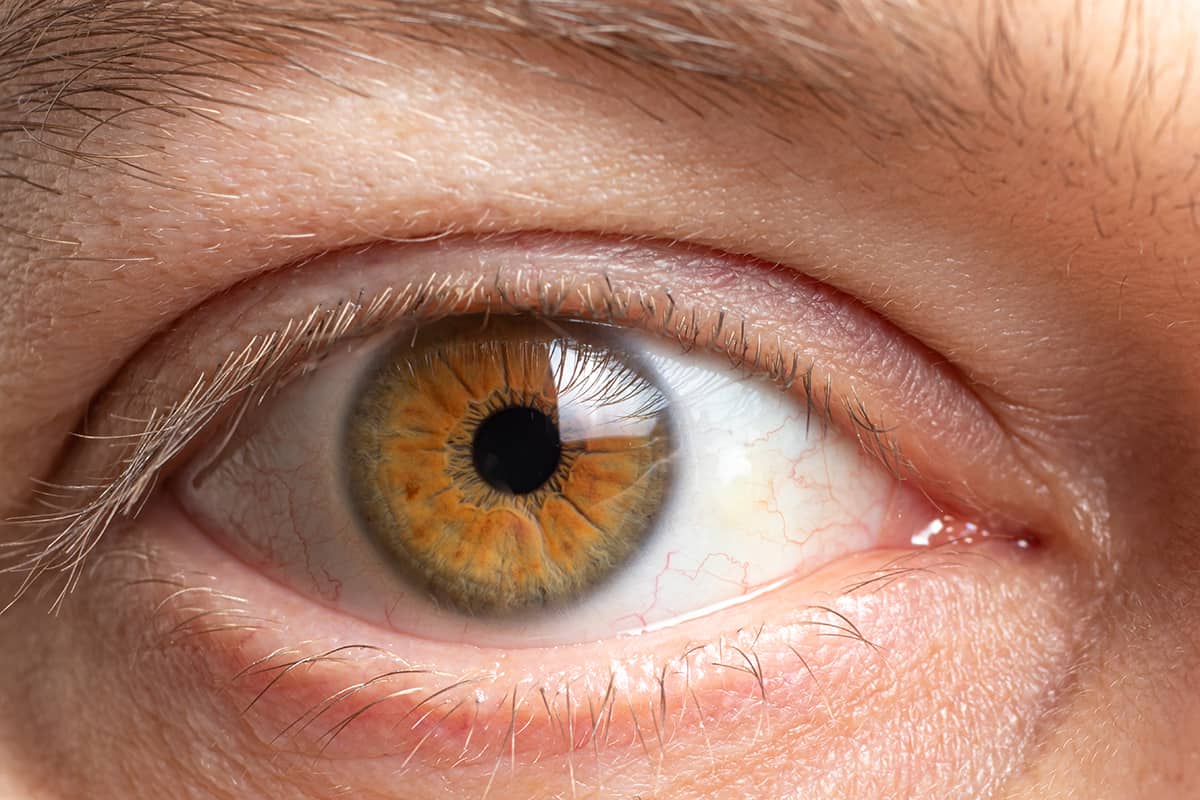Written by Dr. Ali Ghafouri
Drooping eyelids may be caused by the loose and redundant skin of the upper eyelids with aging (dermatochalasis) or by the weakening of the muscles (eyelid ptosis) responsible for opening of your eyes. Droopy eyelids pose many issues for men and women, from trouble with vision restricting the field of vision to aesthetic concerns such as looking tired, asymmetric and older. Upper blepharoplasty and ptosis repair surgery are often confused for each other.
What is the cause of excessive upper eyelid skin (dermatochalasis)?
Drooping upper eyelids are a natural part of the aging process. As we get older, the body produces less collagen and elastin, the proteins responsible for youthful, taut skin. Collagen, often called the “fountain of youth” compound, is a compound in your skin that provides a supple appearance, and elastin helps your skin maintain its form and resilience when stretched. When collagen and elastin levels decrease, you’re more likely to experience loose, sagging skin. Some individuals have a genetic predisposition to premature development of excess loose upper eyelid skin.
How is Blepharoplasty done?
An upper blepharoplasty addresses the drooping eyelid skin by removing the excess skin and fat to restore a younger, well-rested look. The incisions are made along the natural eyelid crease, resulting in well-hidden and nearly invisible scars. This procedure is done in the office with local anesthetic.
What is the cause of upper eyelid ptosis?
Ptosis results from weakening or separation of the muscles that are responsible for opening the eyelids. The main muscle is called the levator, and there is a minor muscle called Muller’s muscle. The most common cause of ptosis is aging as the muscles stretch and loosen. However, ptosis can also be congenital, and it is usually noticed at a young age. In this case, the levator muscle fails to develop properly. Long-term use of contact lenses also could result in stretching of the muscles and ptosis. Certain types of ptosis are familial or related to neurological or muscular disorders. Ptosis could also involve one or both upper eyelids in different degrees.
How is ptosis repair surgery done?
Ptosis repair surgery can be done by either an internal or an external approach. With the external approach, a skin incision is made along the upper eyelid crease and dissection is carried out until the levator muscle is found. Then, the muscle is tightened by placing several internal permanent sutures. With the internal approach, the incision is made in the inside of the upper eyelids and the Muller’s muscle is shortened. The surgical approach depends on the surgeon’s preference, the amount of ptosis and other factors. Ptosis repair is usually done in the office with local anesthetic injections.
What is the cost of ptosis repairs and blepharoplasty?
The cost ranges from $2,800 to $6,000, depending on if one side or both sides need to be done and on if both procedures need to be combined. Please call the office for an estimate.
Is ptosis surgery 100% predictable?
Ptosis surgery is unique because the surgery involves repair of a muscle that is dynamic and whose function is affected by various other factors. There is some degree of unpredictability with ptosis surgery. For this reason, during the surgery, the patient is often asked to open and close their eyes and further adjustment in placement and tension of the sutures are made to obtain optimal height and contour. On rare occasions, revisions need to be made to obtain the best results.
Can ptosis repair and upper blepharoplasty be combined?
Ptosis repair surgery can be combined with blepharoplasty to improve the eyelid appearance and restore functionality. Some patients have excessive loose skin of the upper eyelids in addition to ptosis. In these cases, upper eyelid blepharoplasty can be combined with ptosis repair. In this surgery, the loose skin of the upper eyelid is excised, the fat is removed or repositioned and the levator muscle is tightened. Any of the above procedures can also be combined with brow or forehead lift surgery.
Contact Arizona Oculoplastic Specialists About Eyelid Surgery
If you struggle with drooping eyelids that affect your appearance or vision, contact Dr. Ghafouri in Scottsdale and Phoenix today. Call the Arizona Oculoplastic Specialists at (480) 905-1010, fill out our online form or send us an email at azoculoplastics@gmail.com.
Dr. Ghafouri, MD, FACS, is a distinguished ophthalmic plastic and facial cosmetic surgeon based in Scottsdale and Phoenix, Arizona, with extensive experience in eyelid, eye orbit, tear drainage, and skin cancer surgeries. He specializes in minimally invasive aesthetic procedures such as cosmetic eyelid lifts, endoscopic forehead lifts, mid-facelifts, laser facial rejuvenation, Botox, and dermal fillers. Board-certified by the American Board of Ophthalmology and a fellow of several prestigious medical societies, he has performed over 18,000 major reconstructive and aesthetic surgeries. Dr. Ghafouri and his team at Arizona Oculoplastic Specialists are dedicated to delivering exceptional patient care with compassion and excellence.
9431 E. IRONWOOD SQUARE DR., SCOTTSDALE, AZ 85258
Dr. Ghafouri offers virtual consultations for out-of-town patients. We see patients from all across the country who trust Dr. Ghafouri’s unique skills and expertise for their facial or eyelid surgeries. If you choose to travel to Arizona for your surgery, we can also recommend hotels and other resources to make your stay comfortable.
To schedule a virtual consultation with Dr. Ghafouri Click here.
Contact Us
What procedure are you interested in?
What procedure are you interested in?




